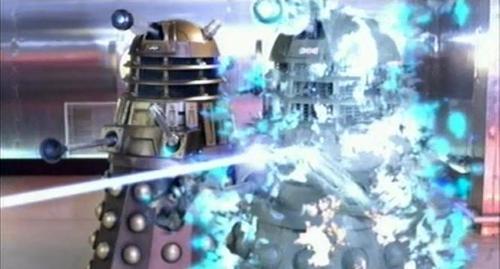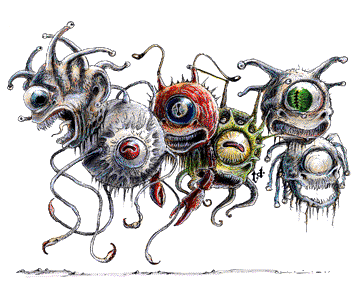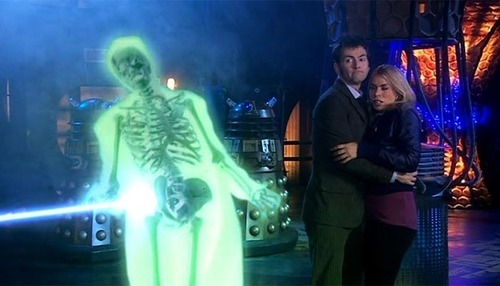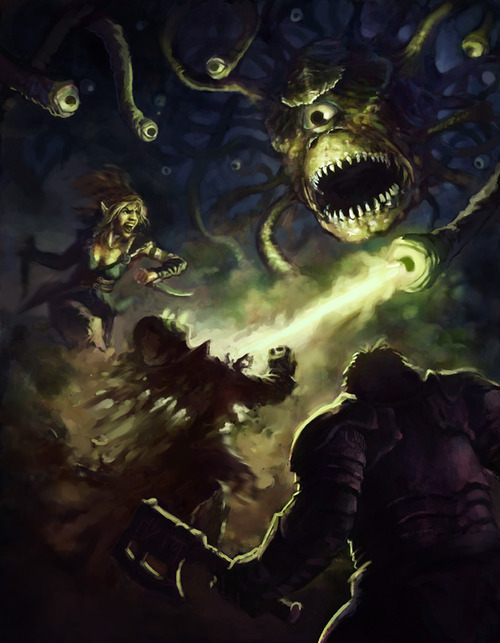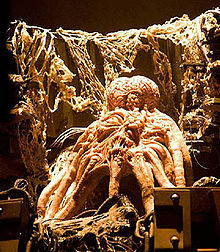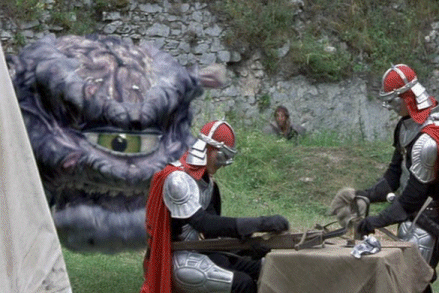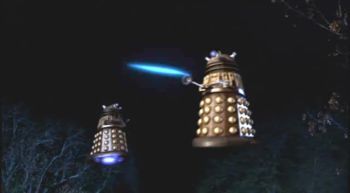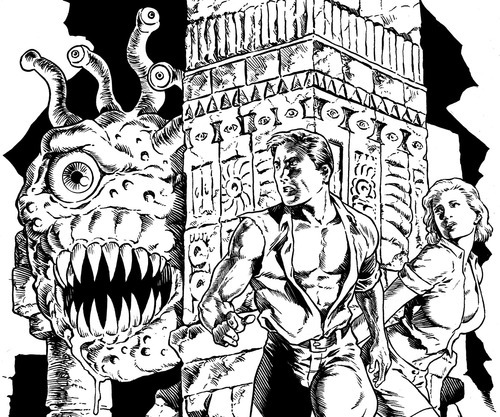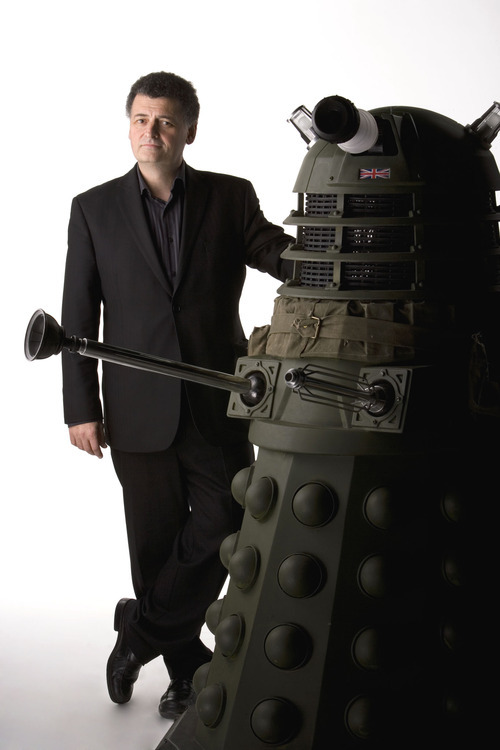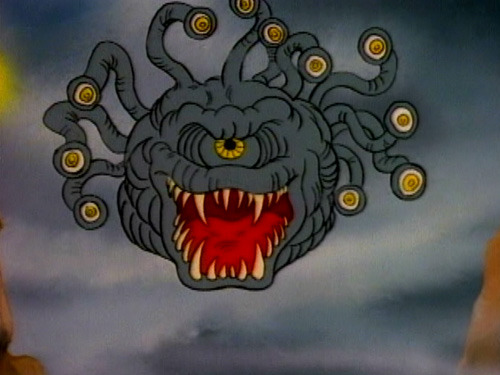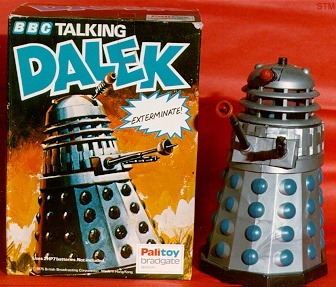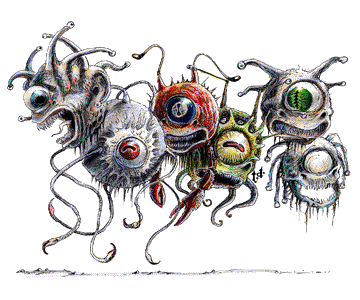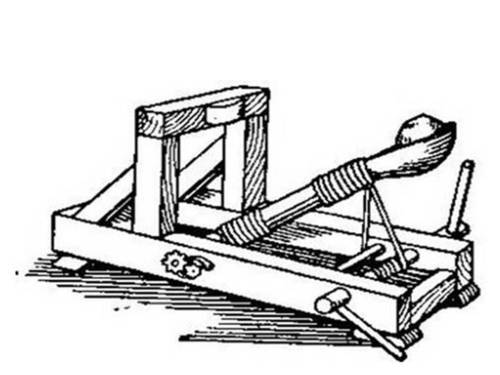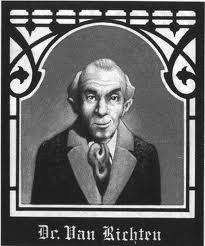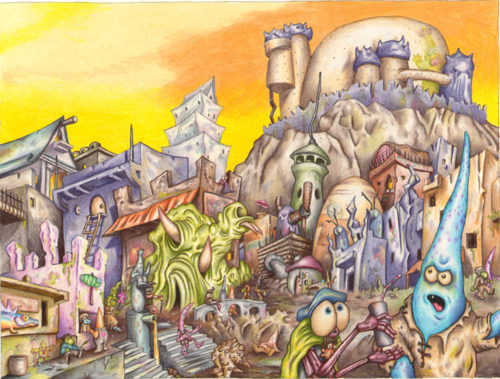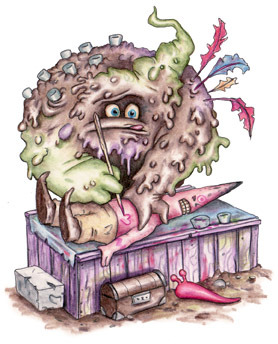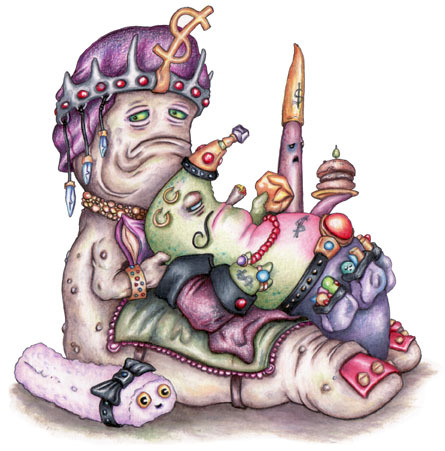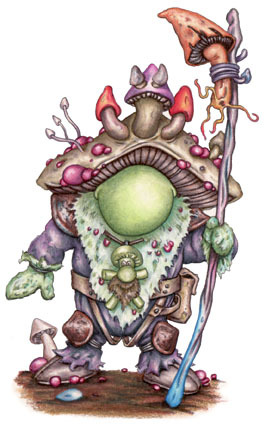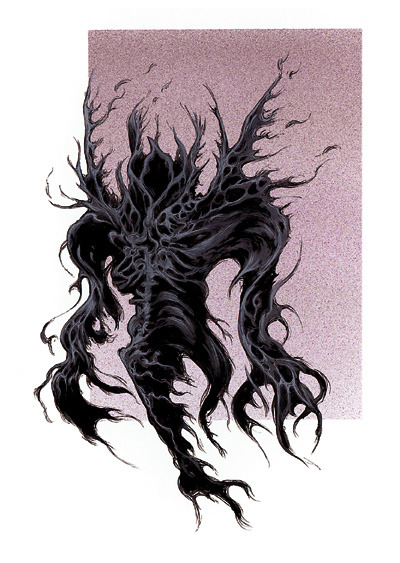
Firstly, while I’ll be using D&D 3.5 as the main mechanical example, it can be easily used for any version of D&D with minimal effort. With that out of the way…
I was looking at the stats for the Allip earlier and read about its ‘Babble’ effect. Basically, you have to roll a saving throw to avoid being fascinated/hypnotized/take-your-pick-depending-on-what-edition-or-variant-of-D&D-you-play-with.
I remembered this encounter I had as a player where we rolled a lot more dice than one usually rolls during an encounter… There was a mind-controlling demon and a room full of Allips. (I’ll probably tell that story in one of my upcoming videos!) Anyway, we were playing D&D 3.5 and every single round we had to roll against the Demon’s mind control, against every single Allip’s Babble, and then roll our attacks if we made those saves. Oh, wait, actually we ALSO had to roll the 50% miss chance even if our attacks would have normally hit the Allips, since Allips are incorporeal and our weapons were not Ghost Touch weapons! And my Urban Ranger had four attacks per round, that was a lot of confirming to do. (Saying “%, %, %, %, %…” is still an inside joke in our gaming trio.)
Anyway, every round needed a lot of dice rolling is what I’m saying. So earlier as I read the Allip section of the book, it occurred to me. Perhaps a way for GMs to streamline such encounters and minimize die rolling would be to simply combine all similar effects into a greater effect instead. What do I mean by that?
Well, first of all as a rule of thumb, you’d have to combine monsters that are all the same and/or have the same type of attack/effect at the same (or similar) Difficulty Class (or challenge base, or whatever other term your favored game uses). Then, instead of having players roll against each monster’s effect individually, you just combine them all into a single, harder roll.
For example, if using D&D 3.5/Pathfinder and the Allip’s Babble at a DC of 16… Instead of rolling a Will Save at DC 16 for each Allip, you roll it once, but at +2 DC for every additional Allip. (DC 18 in the case of two, DC 20 in the case of three…) Basically what you’re doing is trading the odds of a player failing his save by added rolls with the odds of a player failing his save because of a higher DC.
While it’s a hard rule to put into ‘fixed’ terms, I think a DM’s rule of thumb and common sense will have to reign supreme if anyone is to try this. For example, if there are so many monsters that a previously feasible saving throw has now become literally impossible for the players to succeed in, or if the trade-off between ‘risk of failure via repetition’ and ‘risk of failure due to higher difficulty’ is no longer equal, then you need to either use the normal rules, or split the single group of monsters into two groups. (So two die rolls instead of one, but still less die rolls than what would have been initially) That group could also be split more than once, but let’s keep the explanation and examples as simple as possible with two groups of monsters.
As a side-note, I would discourage this house rule with effects that cause actual damage of any sort unless you’ve really considered what would happen in the case of a single failed roll and think it’s acceptable. I think that ‘Cooperative Monster Effects’ should not be used with stacking results (such as HP damage as the most obvious example) unless you really know what you’re doing.
What do I mean by that? Let’s go back to using the Allip as an example. Its mind-controlling Babble affects a character (in D&D 3.5) for 2d4 rounds. It’s not really something that stacks in any important way. In other words, if there are six Allips in the room and one has affected a character, it’s pointless to continue rolling against the other ones and then rolling 2d4 for every other time the player failed his roll, then seeing which one lasts longer. It’s not an effect that stacks, but rather one that ‘replaces’ the previous one if a higher number is rolled.
Let’s see how this could play out.
Billy the Barbarian (awesome name, am I right?) enters a room with 6 Allips in it. Evil DM, a huuuuuge fan of my blog (of course!) has decided to try out my cool little house rule for this encounter! However, a DC of 16 + [2 per additional Allip] would result in a DC of 26!!! A bit too harsh, even by Evil DM’s evil standards. Thus, he’s split the Allips into two groups of three. In other words, Billy the Barbarian will have to make two Will saves at DC 20 to resist their Babble effect. (3 Allips using Babble cooperatively = 16 +2 +2)
Billy succeeds at his first saving throw but fails the second. If the group had been larger and there had been a third group, Evil DM would decide another roll is not needed, since the whole goal of using this house rule is to minimize die rolling in a round. Evil DM rolls 2d4 and gets a 3, so for 3 rounds, the Babble effect will affect Billy. Of course, it’s supposed to be centered on one Allip, so Evil DM simply rolls randomly with 1d6 to determine which of the 6 Allips from the second gorup has affected him. (A new die roll, but still less in total than if Billy had to roll his saving throw six times and then Evil DM had to roll 2d4 for each failed roll!)
Now, under D&D 3.5, once a character has successfully saved against an Allip’s Babble, he can’t be affected by the same Allip with that effect for 24 hours. Let’s say the rest of the party catches up with Billy in that room and the Allips are now distracted by these adventurers and don’t finish Billy’s off (or at least his Wisdom score). Billy’s three rounds of being under the effect pass and he’s in control of himself again. He still has to save against the Babble effects of the Allips once more though. However, he’s now immune to the Babble effect of one Allip. In that case, simply remove that previous +2 to one of the rolls. (Thus, one save at DC 18 and another still at DC 20)
The reason why we kept track of which Allip Billy managed to save against earlier, other than for the obvious role-playing and strategical reasons, is because if the party destroys an Allip, it’s important to know if it’s one that can still use Babble on him or one that can’t affect Billy anymore. In the latter case, the DC would go down again by 2.
It would also be possible for an Allip being the sole ‘survivor’ (Not that undead have actually survived!) of the initial group of three to join with the still-intact second group of three to go for a single DC of 22, but maybe that would be too harsh, depending on Evil DM’s bias and the saving throws that the PCs have. It’s always important for the DM to know what DC should be the ‘ceiling’ for this house rule.
I’ve used 3.5 as my main example for this article, but it can easily be used for other versions of D&D, just use your judgment on how each additional monster would modify the saving throw.Don’t forget that in the case of effects that have to be aimed at specific enemies, you need to split up the groups even more if they aim them at different targets. In some rounds it might mean that you run the rules as they would be officially before switching back to this house rule if they decide to concentrate on a single target afterwards.
I’d like to thank Thauriel_Nerub from the Lamentations of the Flame Princess forums and Mbeacom from the Troll Lord Games forums for their feedback.
And if any of you use this house rule, please let me know how it went! ^_^
(This article has been edited since it was originally posted for clarifications and errata.)
